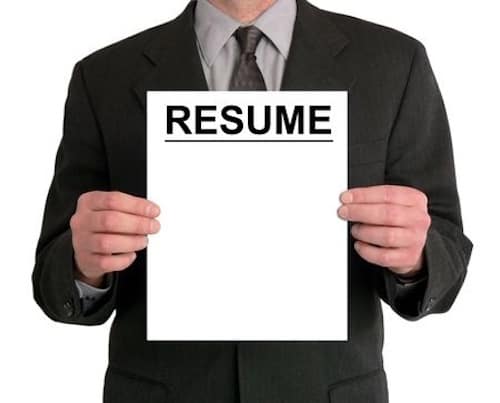Guest post by Brooke Wheelan, Master Consultant at The MBA Exchange and former Associate Director of Admissions at Harvard Business School
With business-school application season already underway, NOW is the time to start updating and refining your résumé. If you’re like most busy professionals, you probably haven’t looked at it since you interviewed for your current job. But a résumé that’s targeted towards gaining admissions to a top business school CAN and SHOULD look different than the one you used for your job hunt.
Why? Because MBA admissions résumés are used in different ways than professional ones. B-school gatekeepers such as admissions professionals, student and alumni volunteers often conduct a “résumé screen” before reading an application in its entirety. Your résumé serves as a “preview” of your candidacy, determining how competitive you are and dictating who reads your full application, including those essays on which you worked so hard. And if you secure a coveted, in-person admissions interview, your interviewer may not have even seen your full application – so your résumé must stand on its own in showcasing your candidacy as impressively as possible.
That’s a tall order for any 1-page – or even a 2-page – document. So, here are a few important tips, from tactical advice on how to structure your résumé to strategic guidance on what to include:
1. Ditch your “career objective.” MBA adcoms consider this to be a waste of space. Besides, you’ll most likely be asked to discuss your career goals elsewhere in the application.
2. Eliminate or at least minimize industry jargon. The deep expertise and specific technical knowledge that impressed your current company will only irritate an MBA adcom. Your priority now is to explain what you do in layman’s terms, which is the exact opposite of what you were trying to demonstrate in a professional résumé.
3. Selectively self-promote. If you earned a faster-than-average promotion or are being sponsored for your MBA, say so in your résumé. If you received an exclusive academic scholarship, were accepted by a prestigious organization or were appointed to a leadership position over many other qualified candidates, write it down. The same goes for very high GPAs and test scores. Be succinct, but definitely include such achievements, honors and awards in your MBA applicant résumé.
4. Focus on quality over quantity. Lose the laundry list of cases you worked on, deals you closed or research you published. Instead, chose a few items that showcase a range of skills from leadership to teamwork to analytic horsepower. Make each example impactful – use action verbs, quantify results and relate it to a relevant business application.
5. Make it personal. Instead of trying to “wow” the adcoms solely with your technical prowess and amazing computer skills, reveal your personality. List a quirky hobby, intriguing affiliation and/or challenging volunteer project that gives the b-school reader a sense of who you are outside of work.
6. Leave them wanting more. You can’t cover your entire life story in this document, but you can give the adcom just enough to get them excited about reading your essays and wanting to meet you in-person.
Need some additional guidance and support to make your résumé as powerful as it possibly can be? Then let one of the top admissions consultants here at The MBA Exchange assist you. As a first step, we invite you to request a free, expert evaluation of your MBA candidacy. (And, yes, be sure to upload your current résumé!)





